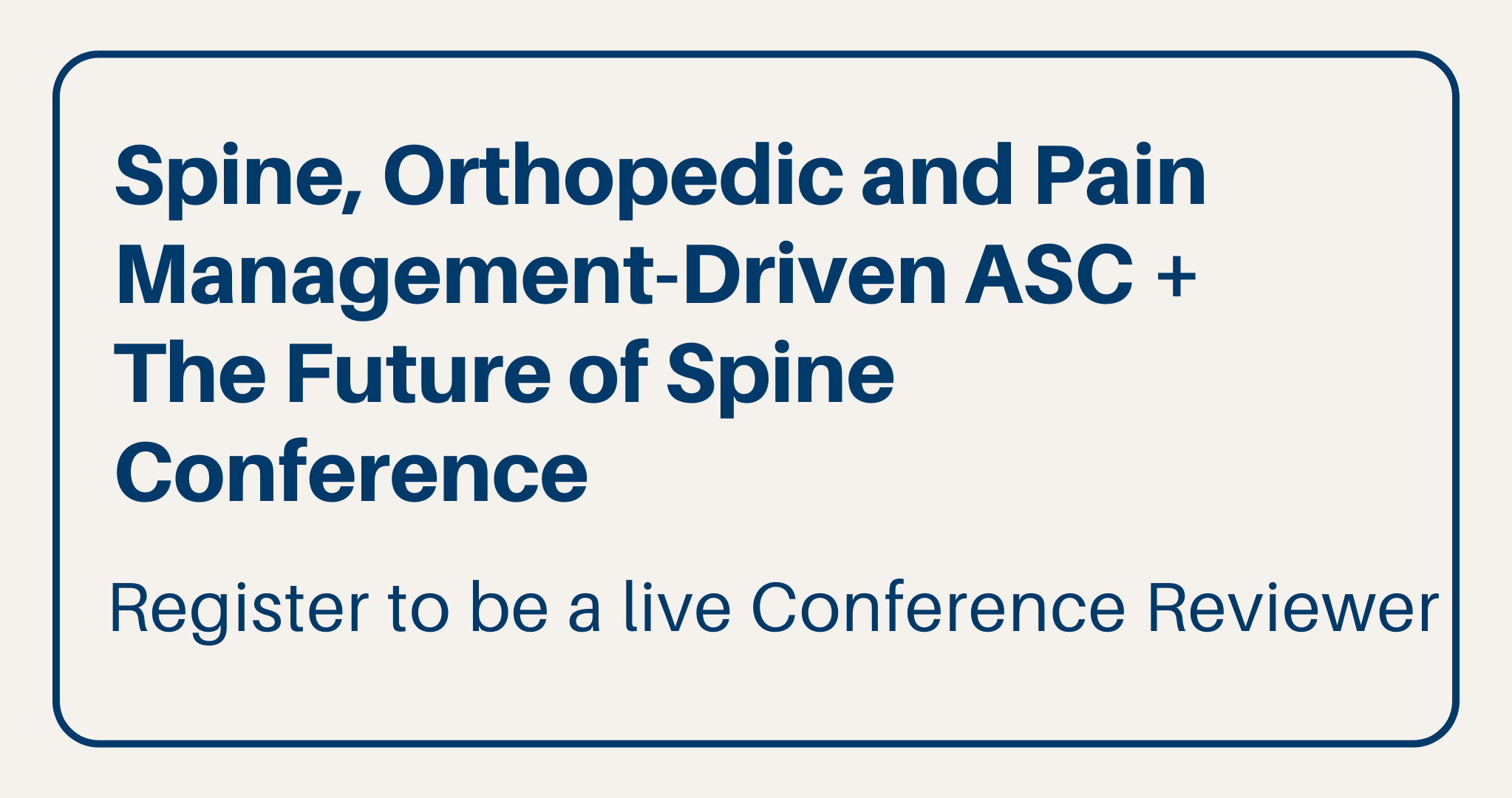Innovation is essential for surgeons. How do you keep a pulse on where the top ideas in orthopedics and spine are coming from?
These nine industry leaders explain where the best ideas in spine and orthopedics are coming from. The executives featured in this article are speaking at Becker's 21st Annual Spine, Orthopedic and Pain Management-Driven ASC + The Future of Spine Conference which is set for June 19-22 at the Swissotel in Chicago.
If you would like to join either event as a speaker, contact Randi Haseman at rhaseman@beckershealthcare.com.
As part of an ongoing series, Becker's is talking to healthcare leaders who will speak at our roundtable. The following are answers from our speakers at the event.
Question: Where are the best ideas in spine and orthopedics coming from right now?
Brett Shore, MD. Orthopedic surgeon of DISC Sports & Spine Center: Innovation is a hallmark of orthopedic surgery; it is part of what drew many of us to the field. While novel approaches to orthopedic problems can come from anywhere and often do, the majority of the best ideas still come from high-volume surgeons looking to improve patient outcomes and efficiency, both in the operating room and in the office setting. Through clinical practice over time, we are able to clearly see where improvement and innovation is needed, and how best to implement it safely and effectively.
James B. Chen, MD. Orthopedic surgeon of DISC Sports & Spine Center: Some of the best ideas in spine and orthopedic surgery continue to come from physician leadership. Especially regarding the future of healthcare, individuals with the integrated experience from direct patient care to healthcare delivery are pivotal to improving outcomes and efficiency across many settings.
Peter Passias, MD. Orthopedic surgery and spine surgery of NYU Langone Health: Assuming relationships are appropriately disclosed, surgeon leaders collaborating with industry remain a vital component of development in our field, as such venues for product and technology development remain the most seamless for introduction to the market place and OR.
Strong surgeon lead research teams also continue to drive innovation, test utility of the onslaught of newer products and translate obscure concepts to real life practical interventions.
Nolan M. Wessell, MD, FAAOS. Assistant professor for the orthopedic surgery department in the spine surgery division of University of Colorado School of Medicine: As an academic surgeon, I wish I could say that the best ideas are coming out of academia. Not to say that there aren't dozens of great spine surgeons in academic settings that are innovative and leading the field but in the era of declining reimbursements, I find myself looking to private practice providers for inspiration. As a field, we need to think about cost effectiveness more than we ever thought we would when going through medical school. Many ASC owners, as well as others, are forced to find creative ways to deliver the same, high quality care at a lower cost. We should all take note and become more engaged in our own practices. It will become even more essential in the coming years.
Katherine Wagner, MD. Neurosurgeon of Ventura Neurosurgery: Augmented reality, improvements in robotics and intraoperative navigation are great. Surgeons and patients also have a greater interest in motion preserving surgery; I suspect this will improve outcomes for many patients in years to come.
James W. Larson, III, MD. Orthopedic surgeon of Bone and Joint Specialists of Winchester: The best ideas in orthopedics are coming from orthobiologics. Most advances before this have come through improvements in techniques and materials. But we need to move toward biological enhancement to make further progress.
Mick Perez-Cruet MD, MSc. Professor and vice chair of neurosurgery of Oakland University William Beaumont School of Medicine: The best ideas in spine and orthopedics are coming from large data banks that collect multiple variables including patient generated outcomes. One such program is the Michigan Spine Surgery Improvement Collaborative. The collaborative includes data collected on patients undergoing surgical treatment of degenerative cervical and lumbar conditions across the state of Michigan. The data is collected by abstractors from neurosurgical and orthopedic private and academic practices. The collaborative is supported by BlueCross BlueShield of Michigan and is exemplary in reducing the cost of spine care while improving patient outcomes.
Alfonso Garcia, MD. Spine surgeon of Cirugía Endoscópica de Columna: The best ideas in spine and orthopedics are coming from orthopedic and spine surgeons who are active in the OR on a regular basis. Surgeons who keep close relationships with the industry come up with better and simpler solutions to old problems. Spine surgery experienced a very noticeable inflection point in the early 2000s when we started to develop more tools for endoscopic bony decompression of the spine and has recently spiked with the addition of fusion implants that can be placed through same endoscopic approaches. These ideas and changes have been motivated by surgeons from Asia mainly and influenced by many others in Europe, as in Germany, Italy, France. Most recently by a small group of well seasoned orthopedic spine and neuro spine surgeons from México.
Zoher Ghogawala, MD. Chair of the department of Neurosurgery of Lahey Clinic: The best ideas in spine are coming from innovative surgeons who are working with industry partners. There is no substitute for collaboration between physician investigators and industry partners. Conflicts of interest must be managed, but collaboration is essential to the creative process.


